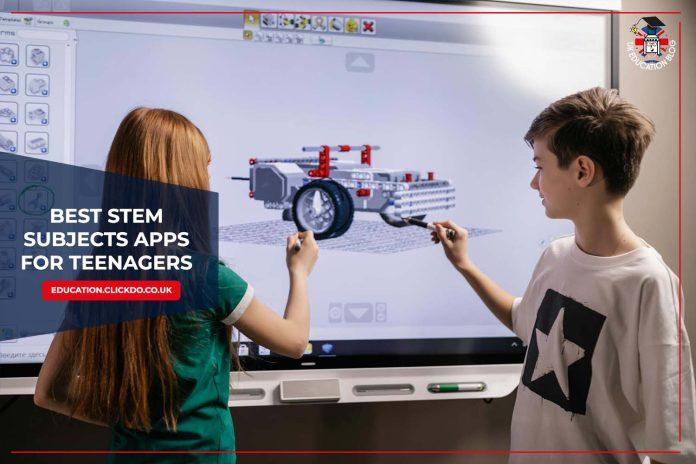The Online Learning Platforms market in the United Kingdom has grown significantly due to evolving customer preferences for flexible and accessible education. Modern learners, particularly busy professionals and students, value the convenience of accessing diverse courses at their own pace. Unlike traditional face-to-face tutoring, online tutoring proved to be most effective during the COVID-19 pandemic.
However, even after the pandemic, online tutoring is the preferred tutoring method of many parents, teachers, and tutors, and working online in education is growing in demand. User penetration in the Online Tutoring market is expected to reach 18.4% by 2029.
The competitive landscape has driven innovation and quality improvements, with established educational institutions contributing to market growth by offering online courses. Strong macroeconomic factors, such as the UK’s robust economy, high internet penetration, and government support for lifelong learning, further support this market expansion.
Along with this growing trend, it gets harder to choose the best tutors online as we find increasingly more providers on the internet. It is therefore important to know all the options to narrow down the most suitable options.
Disclaimer: The information in this post was correct at publication but may be subject to change. The services are ranked based on their rating scores and social media following.
So, here are 12 of the best-rated online tutors in the UK for you to explore.
1. GoStudent

Website: https://www.gostudent.org/
One of the top online tutors in the UK whom the UK Education Blog recently interviewed at the EdTechX summit in London, has taken the UK market by storm, especially during the pandemic. GoStudent offers customised online tutoring classes and is beginning to implement AI for more individualised learning.
Best Features of GoStudent:
- All students are matched with the right tutor according to their individual learning goals and personality.
- The online platform offers optimum flexibility in terms of schedule or location.
- GoStudent elects teachers following a multi-stage interview and selection process so that only the best tutors are added to the community.
- Students can get support from tutors at all levels ranging from primary school to high school diploma.
- Students can enrol in a free trial session with any of the top tutors at GoStudent to test the platform’s functionality.
- Offers new VR language lessons meant for students over 13 years of age.
- A digital whiteboard makes all study sessions highly interactive.
- All learning materials are shared to help students stay on the same page.
Subjects Covered:
The GoStudent portal offers 30+ subjects taught by 23000+ tutors in 15 countries across the globe. Some of the popular subjects are Math, Physics, English, Chemistry, Accounting, Latin, Biology and many more. The levels include Level Tutoring, GCSE Tutoring, 11 plus exam Tutoring, KS4, Tutoring, etc.
- Primary school tutoring
- Secondary school tutoring
- Long-term academic support
- Homework help
- Exam revision
- Preparation for re-sits
Pricing:
Pricing of one-on-one tutoring starts from £30.49 per lesson for 4 lessons of 50 minutes each. You can avail of 8 lessons in a month of 50 minutes each by paying £24.49 per lesson. Click here to learn about the different pricing plans that vary according to your membership duration and the frequency of lessons.
Reviews and Ratings:
With 4.2 stars out of 5 stars and 15671+ reviews on Trustpilot.
Social Media:
App Download:
App Store
Awards and Accreditations:
GoStudent was the recipient of the 2022 EdTechX Scale-Up Award.
2. TutorHunt

Website: https://www.tutorhunt.com/
TutorHunt is a premier online tutoring platform offering online and in-person classes across all educational levels, from primary to degree and adult education. TutorHunt is known for its customisable and accessible educational solutions. The platform features a user-friendly interface and responsive design, facilitating seamless navigation and flexibility for lessons anytime and anywhere. TutorHunt’s commitment to transparency, with clearly displayed rates and reviews, builds trust and ensures users receive high-quality service.
Best Features of TutorHunt:
- Students can make the most of interactive lessons while sitting in the comfort of their homes through the whiteboard, which allows screen sharing, dual-way video, and document uploading.
- A simple scheduler makes it easy to manage all your lessons under one roof.
- All tutors are ID-checked & referenced. They also have an enhanced DBS for guaranteeing student safety.
- A built-in messenger helps to contact tutors without any upper limit before deciding on your perfect pick.
Subjects Covered:
Popular subjects are maths, biology, English, chemistry, science, physics, geography, and history. You can choose tutors for primary, KS3, GCSE, A-level, degree, adult learner, and IB.
Pricing:
Prices start from £12/hr.
Reviews and Ratings:
TutorHunt has received 4.8 out of 5 stars with 3859 reviews in Trustpilot.
Social Media:
3. MyTutor

Website: https://www.mytutor.co.uk
MyTutor is the UK’s most trusted tutoring platform by parents. The tutors are experts in over 30 subjects from KS2 up to GCSE and A Level, so the schools use them to support their teaching.
Best Features of MyTutor:
- All the tutors are handpicked from the UK as they have undertaken the same course at their school level and can guide students accordingly.
- MyTutor works with 1500 tutors across the UK to bridge the learning gaps of students and assist them in attaining their educational goals.
- All the students are matched with the perfect tutor according to their preferred subject, level & board.
- Interactive learning sessions can make even the dreaded subjects highly fun.
- MyTutor’s interactive online learning platform allows students to learn at their own pace without leaving the comfort of their homes.
- Students can interact with tutors on a real-time basis.
- All the lessons are recorded for revision, which helps students understand the topic better by recalling the material taught.
Subjects Covered:
The courses offered are of both School Subjects and Career Related. The courses include:-
FOR SCHOOLS
- GCSE English
- GCSE Physics
- A level French
- A Level of Biology and many more
CAREER-RELATED
- Communication Skills
- University Prep
Pricing:
Tutors set their prices based on their experience and qualifications. For further clarification click here.
- Novice tutors can expect between £22-32.
- After gaining 6 months experience, tutors can charge between £33-43
- Accomplished tutors with excellent reviews can charge £44-55
Age 15-18 Children can be enrolled in Career Related Courses.
Reviews and Ratings:
MyTutor has received 4.6 out of 5-star ratings with 3425 reviews on Trustpilot.
Social Media:
Awards and Accreditations:
My tutor has been the finalist and award winner in various competitions. Some of these are mentioned below.
- MyTutor is a finalist in the Bett Awards 2018
- Education Investor Awards has given the Best private tutoring company award to my tutors in the year 2018
4. Tutorful
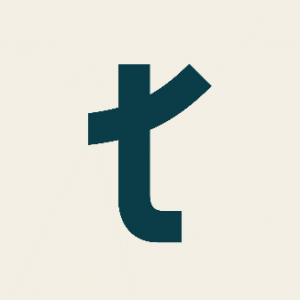
Website: https://tutorful.co.uk/
Tutorful was born out of the belief that by bringing all the best tutors together in one place you could help anyone find the perfect tutor for them. They are now also providing one-to-one tuition.
Best Features of Tutorful:
- They offer special teaching for anyone preparing for any specific exam like GCSE. Here, you can compare thousands of tutors and then choose the one you want to go forward with your learning.
- You can choose amongst 5595 tutors who have been handpicked after enhanced DBS checks.
- With the flexibility of Tutorful, students can easily fit the lessons around their schedule.
- Tutorful monitors all communication between teacher and student, making it a safe choice for education.
- Students can access an intuitive whiteboard making the learning session highly interactive.
Subjects Covered:
Here is the list of the most popular subjects in which they offer tuition. These are just courses under which many subjects still come so you may get the widest range possible.
- Math
- English
- Science
- Language
- Music
- Humanities and Arts
- SATs
- Computing
- Special Educational Needs
Pricing:
Lessons with the tutors will vary in price depending on the level of study, the subject selected, and the experience of the tutor.
Sessions generally cost between £15 and £75 per hour. you can learn about the charges of different tutors by clicking here.
The courses available are available for all age groups in need of tutoring.
Reviews and Ratings:
This online tutoring platform has a solid rating of 4.4 out of 5 from a total of 3797 reviews on Trustpilot.
Social Media:
App Download:
Awards and Accreditations:
In the year 2017, Tutorful won the “Northern Stars Award”, the UK’s most exciting pitch competition despite tough competition.
5. FirstTutors

Website: https://www.firsttutors.com/uk/
First Tutors have thousands of tutors nationwide, covering a wide variety of subjects. There are no minimum or maximum limits on the number of hours you can book a tutor. The services can be accessed 24/7.
Best Features of First Tutors:
- You can search for tutors according to your geolocation. You can learn about the areas covered by clicking here.
- Students can choose between online private coaching and face-to-face training.
- First Tutors run a thorough background check on all tutors to guarantee complete peace of mind for students and their parents.
- Students can discuss syllabi and share their diaries with the tutors.
- You can choose amongst 60000+tutors spread across the UK.
- Customer support offered 7 days a week can offer fast help to student grievances.
Subjects Covered:
First Tutors helps in finding a tutor for any subject and level. Many courses including the classes are of:
- Academic
- IT
- Business
- Dance
- Language
- Arts & Crafts
Pricing:
- First Tutors – £9.99 – £34.99
The fees can vary according to the tutor’s price per hour which makes the service affordable. Tutors’ average fee is £18 per hour tutors charge upwards of £9 per hour)
The courses available are available for all age groups who require tutoring.
Reviews and Ratings:
It has got 4.8 stars out of 5 stars with 4639 reviews submitted on Trustpilot.
Social Media:
Awards and Accreditations:
First tutors have always been in the media coverage for their great services. Moreover, they have won many awards such as,
- Education Investor Supplementary Education Provider of the Year (we’ve won and been nominated as a finalist several times in this category).
- Dedipower Sunday Telegraph Digital Awards (national finalists)
- Working Mum Awards – Best SME (national finalists)
- Big Chip Awards – Best eBusiness (winners)
6. Superprof

Website: https://www.superprof.co.uk/
SuperProf is a teaching community of more than 20 million teachers from across the globe. It is spread across 42 different countries and imparts knowledge in 14 different languages.
Best Features of Superprof:
- This is one of the most popular teacher marketplaces in the world with the involvement of 40 countries.
- Here, after the student is enrolled, the fees will vary according to tutors. It is not the same for all tutors and it is different for all 40 countries.
- There are over 1,000 subjects available on Superprof, which eases the way for students to learn different subjects from a single platform. For learning, they are trusted by many students and their parents.
- You can explore the available subjects according to your city in London.
- Students can sift through the profiles of tutors and filter them according to experience, price, and qualifications.
- It is possible for students to contact the tutor to organise the lesson either online or at their preferred location.
- The Superprof platform offers complete flexibility to students in terms of lesson format whether group or individual sessions.
- A simple interface makes it easy for users to find and connect with tutors in a few clicks.
Subjects Covered:
- Languages
- Musical Instruments
- Academics
- Personal development and many more.
Pricing:
- In the UK, it’s £39 per month; it is roughly equivalent in other countries, allowing for exchange rates.
Reviews and Ratings:
This online tutoring platform has garnered 4.1 out of 5 stars with 1378 reviews on Trustpilot.
Social Media:
7. Third Space Learning

Website: https://thirdspacelearning.com
Trusted by over 4,000 schools, Third Space Learning provides online tutoring for schools across the UK.
They are maths tutoring experts and provide one-to-one personalised maths support for primary and secondary schools.
As well as their traditional online tutoring platform they have now introduced Skye, their AI voice tutor, to make online tutoring in maths affordable for all schools.
Best Features of Third Space Learning:
- Maths specialists only: Unlike general tutoring services, Third Space Learning focuses solely on maths, ensuring deep subject expertise
- Curriculum alignment: All content matches the National Curriculum for KS2 and KS3 and major GCSE exam boards (AQA, Edexcel, OCR)
- Flexibility: Schools can support up to 20 students simultaneously, with sessions fitting around school schedules
- Regular progress tracking: Schools receive detailed reports on student progress, gaps, and improvements after each session
- Additional resources: In addition to the online maths tuition, schools get access to a resource library including hundreds of worksheets, revision materials, and practice papers
- Experience and scale: Over 4,000 schools served since 2013, with 2 million+ sessions delivered to 160,000+ pupils
- Proven results: students receiving GCSE maths tuition improved by 1.19 grades on average, and pupils working with online primary maths tutors made up to 7 months of progress in 14 weeks
- Cost efficiency: Very affordable – designed for school budgets.
Subjects Covered:
- KS2 Foundation Programmes for pupils with significant gaps from previous years
- KS2 Booster Programmes for pupils working just behind their year group
- Year 6 SATs Boosters
- KS3 Foundation and Gap-filling programmes for secondary schools
- GCSE programmes focused on specific target grades
- Securing KS3
- GCSE Grade 3 to Grade 7
Pricing:
Online maths tutoring with Skye, the AI voice tutor, is available for an unlimited number of pupils in your school for one low fixed price. For typical use in a two-form entry school, this works out at just £2 per pupil per one-to-one session.
Reviews and Awards:
4.2 Stars out of 5 based on 6 Google reviews and 96% recommend based on 17 Facebook reviews.
TeacherTapp Gold Recommendation Award: The Brands That Rule The Classroom.
Social Media:
8. Edumentors

Website: https://edumentors.co.uk/
Edumentors aims to help students gain entry to their dream universities, build confidence, and develop a passion for learning. Focused on GCSE and A-level students, the platform offers comprehensive subject support and guidance in personal statement writing, university applications, and career planning. A distinctive feature of Edumentors is its recruitment of tutors who are current students at top UK universities, enabling them to connect with their tutees both academically and emotionally.
Best Features of Edumentors:
- Students can benefit from the free trial with tutors before actually booking their sessions.
- Per session payment mode makes it more economical for students on a stringent budget.
- If a student is unhappy with the tutor, they are replaced by Edumentors at no additional cost.
Subjects Covered:
At Edumentor, you can find tutors for traditional subjects like maths, physics, chemistry, biology, computer science, and language, or mentoring courses like personal statement, career guidance, university interview guidance, and university application guidance. The tutors can be filtered according to different levels like GCSE, A-level, 11+, IGCSE, National 4 & 5, KS1, KS2, KS3, and IB.
Pricing:
- Per session, pricing ranges from £1 to £150. By clicking here, you can filter out a tutor of your choice according to your budget.
Reviews and Ratings:
Edumentors has received 4.7 out of 5 stars with 90 reviews in Trustpilot.
Social Media:
9. TutorHouse
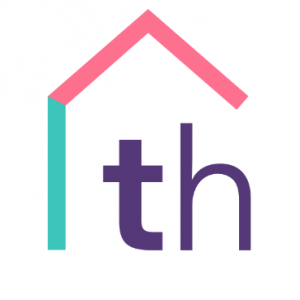
Website: https://tutorhouse.co.uk/
TutorHouse is one of the leading tutoring platforms in the UK. They offer tuition for both online and in-person students from across the country and the globe. Their goal is to make learning accessible to everyone, no matter their age, level, or budget.
Best Features of Tutor House:
- They provide 30-minute free trials with a tutor to check if they are the right one for you.
- You will get the recorded classes if you have missed any.
- A rigorous interview and training process helps handpick only the best tutors.
- Interactive lessons allow students to record their session alongside audio & video sharing capabilities.
- Students don’t have to pay any additional fee apart from the tuition cost.
- TutorHouse offers a 100% money-back guarantee to students.
Subjects Covered:
TutorHouse has an expert teaching faculty who teach subjects like Spanish, English, Physics, Law, French, Chemistry, Math, etc in their courses. The courses include
- Common Entrance
- UCAS & University
- A-level retake courses
- Homeschooling
TutorHouse provides tuition from the age of homeschooling to adulthood. They tutor for Common Entrance Examinations for ages 11 to age 13 as well.
Pricing:
The teachers, once selected and interviewed, are allowed to set their prices based on their experience. The payment style is flexible, and the deals come in pay-as-you-go, bulk bookings, or package deals.
Private online tuitions start from £20/hr up to £90. You can click here to find tutors and filter out your choice according to subjects & price.
Reviews and Ratings:
On Trustpilot TutorHouse has a rating of 3.8 out of 5 stars, with 50 reviews.
Social Media:
10. Battersea House 
Website: https://batterseahouse.co.uk/
One of the most exciting new entrants in the UK tutoring scene, Battersea House is quickly gaining recognition for its personalised approach to online education. Founded by experienced educators, the platform has grown steadily post-pandemic, offering a flexible and high-quality alternative to traditional tutoring.
With a focus on one-to-one and group sessions, Battersea House supports learners from primary school to Oxbridge preparation, including those with additional educational needs. Its blend of expert tutors, family-friendly pricing models, and growing international reach is setting a new standard for online learning in the UK.
Best Features of Battersea House
- Expertly curated tutors: Each tutor is selected for both academic excellence and their ability to motivate, with experience spanning primary to Oxbridge preparation and adult learning.
- Flexible delivery options: Offers both one-to-one and group lessons, available hourly or via subscription—ideal for busy families and home-schoolers.
- Whole-learner approach: Supports primary, GCSE, A-Level, and international students, as well as those with additional educational needs, fostering confidence and academic resilience.
- Bespoke tutor matching and flexible scheduling blend: Their emphasis on both primary education and advanced exam prep makes them a uniquely well-rounded option in the UK online tutoring landscape.
Subjects Covered
A broad spectrum including:
- Core academic subjects (Maths, English, Sciences)
- Oxbridge interview prep
- SEN/D specialist support
Pricing
Clear, transparent pricing with no hidden fees—choose between ad-hoc hourly sessions or cost-effective subscription bundles tailored to individual learning goals. Basic tutorials start from £22 per hour, and subscriptions are available from £92 per month.
Social Media:
Instagram: 1,046 followers
11. FleetTutors

Website: https://www.fleet-tutors.co.uk/
Fleet Tutors has helped over 100,000 students across London, the UK, and internationally, achieve the results they need in entrance exams, public exams, or catching up with their peers. Tutors come to your home or the location of your choice, and they also tutor online.
Best Features of Fleet Tutors:
- You can choose amongst tutors who are experts in different subjects, educational levels, and professional exams.
- All the tutors registered on this platform undergo stringent background checks, making the service fully safe for students.
- Fleet Tutors offers a bespoke homeschooling programme which can be accommodated to the pupil’s existing schedule.
Subjects Covered:
A wide variety of courses is offered which include several subjects like maths, science, English, geography, history & language of varying levels such as:
- Under 10s
- 7+11+13+Common Entrance
- GCSE/IGCSE
- A Level
- IB Tutors
- Special Needs Education
Pricing:
£75.00 / per-pupil. You can call up the customer representatives at Fleet Tutors by dialling 01252371731 and enquire about the prices directly. Alternatively, you can fill in this form by clicking here to get a call back with the best tutor suggestions.
Reviews and Ratings:
Fleettutors have received ratings of 3.3 stars out of 5 with 13 reviews on indeed.com.
Social Media:
12. Ostado
Website: https://ostado.uk/

Ostado is an online tutoring platform with 8 years of experience offering services to more than 200K students. With over 1 million hours of tutoring, it now provides services in the international market focusing on STEM subjects and exam preparations such as GCSE, A-level, 11+, 13+, KS3, and more.
Best Features of Ostado:
The 4-stage hiring process for tutors ensures students about the quality of the sessions. It provides affordable private tutoring so everyone can benefit from quality education online without geographical boundaries. There are also a variety of prices according to tutors’ qualifications you can choose from.
Subjects Covered:
- Maths
- Combined Science
- Chemistry
- Physics
- Computer Science
- Exam preparation:
- Key stage 3
- GCSE
- 11+
- 13+
- A-level
Pricing:
The prices start from £15 with an average of £29 according to the tutor’s experience, qualification, and subjects covered.
Social Media:
Final Thoughts
After considering all the available online tutoring options, you should be able to pick and choose the providers most suitable for your student’s or child’s needs. Analyzing and planning our moves even if they are for the basic level ultimately shapes our future.
Choosing from the best tutors in the UK we can now decide for ourselves which suits the best for us. Select the best and learn from the best today!
For further queries or recommendations, get in touch with us here.

























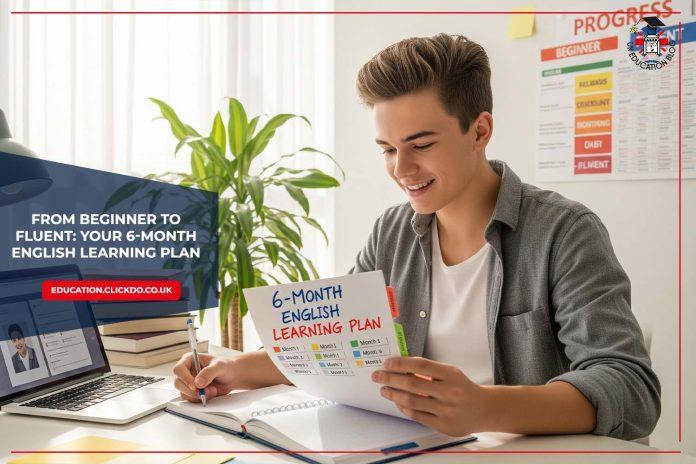
 Six months may sound ambitious, but when broken into logical phases, it becomes surprisingly realistic. Each month focuses on a narrow set of skills, ensuring effort stays concentrated.
Six months may sound ambitious, but when broken into logical phases, it becomes surprisingly realistic. Each month focuses on a narrow set of skills, ensuring effort stays concentrated.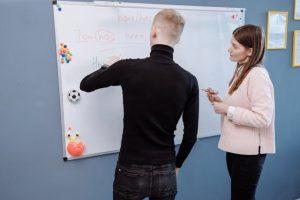



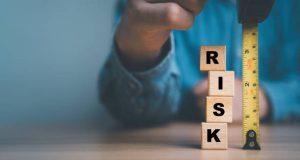
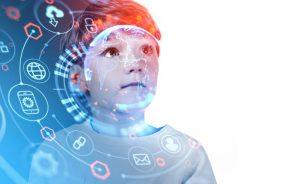

 thinking skills and support healthy mental growth.
thinking skills and support healthy mental growth. fine and gross motor skills.
fine and gross motor skills.
 role-play toys that support their growth.
role-play toys that support their growth.
 manages important school data, supports teaching, and keeps things organised for administrators.
manages important school data, supports teaching, and keeps things organised for administrators. pupil data, and assessing learners. They’re built to save us time and make daily routines smoother.
pupil data, and assessing learners. They’re built to save us time and make daily routines smoother. students. These systems keep records accurate, protect privacy, and streamline routines for teachers and pupils alike.
students. These systems keep records accurate, protect privacy, and streamline routines for teachers and pupils alike.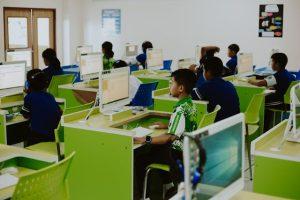 with other tools, adapt to the future, and handle growth as our school community changes.
with other tools, adapt to the future, and handle growth as our school community changes.



